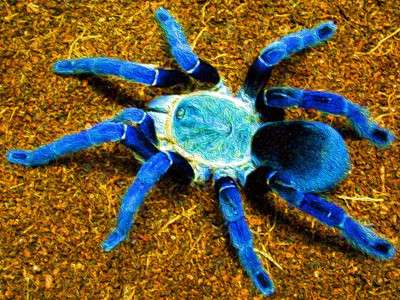
North and Central America are home to Brachypelma klaasi, the Mexican pink tarantula. Numerous habitat types, such as humid, arid, and deciduous woodland zones, are home to Brachypelma klaasi. It can be found between 300 and 1,400 metres above sea level. From Tepic, Nayarit in the north to Chamela, Jalisco in the south, this species’ recognized range stretches. Specifically, this refers to Mexico’s southern Pacific coast. The Chamela biological reserve in Jalisco is home to the biggest known population of B. klaasi.
Habitat
This tarantula lives between 300 and 1,400 m above sea level in tropical deciduous woodland. The soil is neutral, sandy and has little organic matter.
Description of the body
Females of the sexually dimorphic Brachypelma klaasi species are larger and heavier than males.
Body Length
Body length for female B. klaasi is between 50 and 75 mm, and weight is between 19.7 and 50 grams. Males can weigh between 10 and 45 grams. In Arnett (1986),
Parts of Body
By our standards, these spiders are vibrantly colored. Brachypelma klaasi possesses an orange-yellow metatarsus, tibias, and patellas, as well as a black carapace, tarsi, femora, and coxae. Orange-yellow coloured hairs are also present on the opisthosoma. Although they have a bright appearance, these spiders are actually quite well camouflaged in their natural habitat, making them very challenging to spot on organic materials.

Feeding Habits
B. klaasi uses a variety of hunting techniques, including active foraging on the forest floor near to its burrow and foraging up to two meters up in the surrounding plants. The tarantula also hunts by “sitting and waiting.” The silk covering the burrow entrance aids in the transmission of vibrations caused by prey movement to the tarantula. Large insects like Orthoptera and Blattodea, as well as small lizards and frogs, are typical prey. Prey remains are retrieved from the burrow after feeding there and dumped close to the entrance.
Lifespan
Females have a 30-year life expectancy. Males may live shorter lives, especially as they are more likely to stray and become prey than females. Additionally, there is some evidence to suggest that females may cannibalize their partners, significantly shortening the lifespan of males.
Importance
Role in Ecosystems
There is a chance that these tarantulas have an effect on insect populations. They might benefit predator populations to the extent that they are a prey species. These spiders’ ability to burrow may also be interpreted as helping to aerate the soil.
Positively Important for Humans
B. klaasi’s primary populations are found far from people. As a result, there is little interaction between people. Zoos are where this tarantula generates the greatest controversy. This species is incredibly lovely and a favorite among spider enthusiasts. These creatures are thus unlawfully taken and utilized in the pet trade.
Negatively Important for Humans
The species has a negative impact on humans through illicit pet trade. B. klaasi is particularly valuable on the illicit market due to its rarity. As a result, numerous people are detained while attempting to steal tarantulas. Additionally, there is always a chance of getting bitten, which can be unpleasant, when people come into contact with these spiders.
As Pet
The Mexican Pink Tarantula, like the majority of species in the Brachypelma genus, does not require a particularly complex cage. A variety of different containers can be used to create a temporary cage. For this species, a cage that is around 18″ x 18″ x 12″ will do just fine. You should give a warm environment with temperatures between 78 and 82 °F because the Brachypelma klaasi is native to warm regions of Mexico. In the winter, you may need to install a heater. Making one end of the cage warmer while leaving the other unheated is a smart idea.
Table





